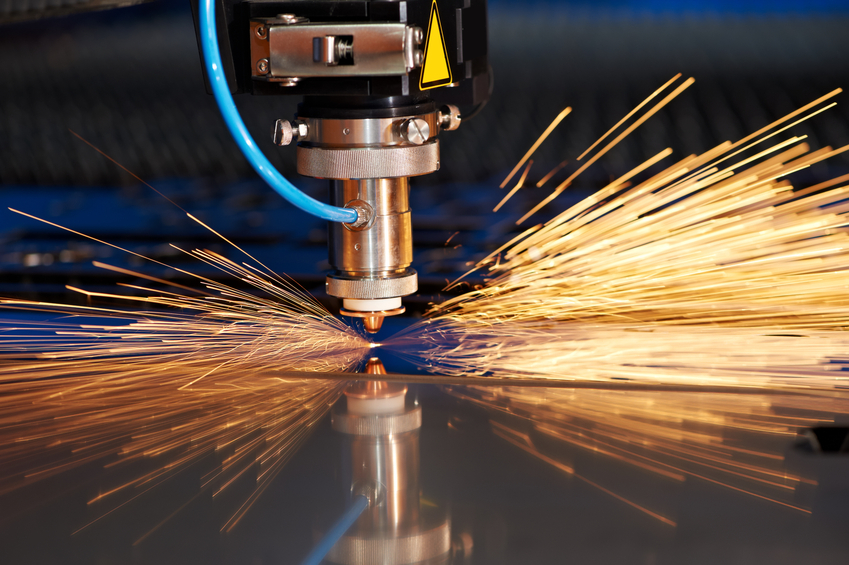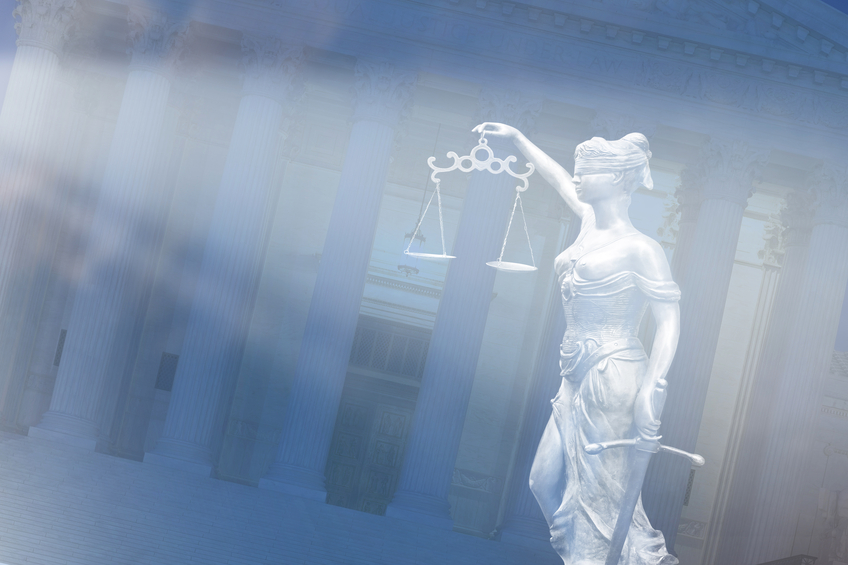Interactive & Video Discount Package - Maryland Mechanical and Ethics 16 PDH
Heat Exchangers (M01-302)
Fundamentals of Fluid Power (M02-301)
Heat Transfer (M01-301)
Duct Systems and Ventilation (M01-307)
Centrifugal and Positive Displacement Pumps (M01-306)
Thermodynamics (M03-303)
Psychrometrics (M01-104V)

This online engineering PDH interactive presentation addresses two aspects of metals: the structures and the properties.
This presentation deals first with the basic structures of metals and how those structures are affected by various processes. In addition, it provides information on the various imperfections and defects that the metal may sustain and how they affect the metal.
Moreover, this presentation provides information on metal properties which are considered when selecting material for engineering design purposes. Each of these properties contains a discussion on how the property is affected and the metal's application.
This 2 PDH online interactive presentation is intended primarily to structural and mechanical engineers, construction and design personnel, technical staff and facility operators who are interested in gaining a better understanding of the structures and properties of metals.
- Understanding bonding
- Learning about common lattice types
- Understanding grain structure and boundary
- Learning about polymorphism and alloys
- Knowing the imperfection in metals
- Learning about stress and strain and Young's Modulus
- Understanding stress-strain relationship
- Understanding the physical properties of materials
- Learning about working metals and corrosion
- Understanding hydrogen embrittlement
Upon successful completion of the quiz, print your Certificate of Completion instantly. (Note: if you are paying by check or money order, you will be able to print it after we receive your payment.) For your convenience, we will also email it to you. Please note that you can log in to your account at any time to access and print your Certificate of Completion.

This online engineering PDH interactive presentation provides an overview of the purpose, construction, and principles of operation of the major types of heat exchangers.
In almost any nuclear, chemical, or mechanical system, heat must be transferred from one place to another or from one fluid to another. Heat exchangers are used to transfer heat from one fluid to another. A basic understanding of the mechanical components of a heat exchanger is important to understanding how they function and operate. Common applications of heat exchangers include boilers, fan coolers, cooling water heat exchangers, and condensers.
This 1 PDH online interactive presentation is applicable to mechanical and chemical engineers, facility operators, maintenance personnel and professionals who are interested in learning more about heat exchangers and their specific applications.
This PE continuing education interactive presentation is intended to provide you with the following specific knowledge and skills:
- Familiarizing with the basic heat transfer terminology
- Understanding the purpose of heat exchangers
- Learning about the construction and types of heat exchangers
- Gaining an overview of the different heat exchanger applications
Once you finish watching the PDH interactive presentation, you will be redirected to your account to take a multiple-choice quiz consisting of ten (10) questions to earn 1 PDH credit. The quiz will be based on this interactive presentation.
Upon successful completion of the quiz, print your Certificate of Completion instantly. (Note: if you are paying by check or money order, you will be able to print it after we receive your payment.) For your convenience, we will also email it to you. Please note that you can log in to your account at any time to access and print your Certificate of Completion.

This online engineering PDH interactive presentation provides guidance on the fundamentals of the fluid power of pumped or compressed fluids which generate force and motion.
Fluid power which includes hydraulics and pneumatics is a term that describes the generation, control, and application of smooth, effective power of pumped or compressed fluids to provide force and motion to mechanisms.
The extensive use of hydraulics and pneumatics to transmit power is due to the fact that properly constructed fluid power systems possess a number of favorable characteristics, namely eliminating the need for complicated systems of gears, cams, and levers, and providing a smooth, flexible, uniform action without vibration, and without being affected by variations of load, at affordable costs of operations.
This 2 PDH online interactive presentation is intended primarily for mechanical and civil engineers who are interested in learning more about fluid power systems, the operation of its components and the general principles which are common to all physical mechanisms.
This continuing education interactive presentation is intended to provide you with the following specific knowledge and skills:
- Recognizing the fundamentals of fluid power
- Gaining an overview on the concept and history of hydraulics and pneumatics
- Identifying the states of matter
- Understanding the concept of liquids at rest and how to measure pressures
- Solving problems and equations involved with the transmission of forces
- Recognizing the characteristics and behavior of fluids in motion
- Understanding the relationship of force, pressure, and head
- Describing the operating characteristics and component functions of basic fluid power systems
- Gaining an overview on the properties of hydraulic fluids
- Identifying the different types of hydraulic fluids
- Identifying the types, characteristics, and origin of hydraulic systems’ contaminants
Once you finish watching the PDH interactive presentation, you will be redirected to your account to take a multiple-choice quiz consisting of fifteen (15) questions to earn 2 PDH credits. The quiz will be based on this interactive presentation.
Upon successful completion of the quiz, print your Certificate of Completion instantly. (Note: if you are paying by check or money order, you will be able to print it after we receive your payment.) For your convenience, we will also email it to you. Please note that you can log in to your account at any time to access and print your Certificate of Completion.

This online engineering PDH interactive presentation presents the fundamentals of heat transfer and describes how specific parameters affect the rate of heat transfer.
Temperature is a measure of the amount of energy possessed by the molecules of a substance. It is a relative measure of how hot or cold a substance is and can be used to predict the direction of heat transfer. Heat is energy in transit. The transfer of energy as heat occurs at the molecular level as a result of a temperature difference. Heat is capable of being transmitted through solids and fluids by conduction, through fluids by convection, and through empty space by radiation.
When a temperature difference exists across a boundary, the Second Law of Thermodynamics indicates the natural flow of energy is from the hotter body to the colder body. The Second Law of Thermodynamics denies the possibility of ever completely converting into work all the heat supplied to a system operating in a cycle.
This 1 PDH online interactive presentation is intended primarily for mechanical and chemical engineers and professionals who are interested in learning more about the basics of heat transfer.
This PE continuing education interactive presentation is intended to provide you with the following specific knowledge and skills:
- Understanding the difference between heat, temperature and work
- Familiarizing with heat transfer terminology
- Understanding the Second Law of Thermodynamics
- Learning about the three modes of heat transfer; conduction, convection, and radiation
- Performing heat transfer calculations
Upon successful completion of the quiz, print your Certificate of Completion instantly. (Note: if you are paying by check or money order, you will be able to print it after we receive your payment.) For your convenience, we will also email it to you. Please note that you can log in to your account at any time to access and print your Certificate of Completion.

This online engineering PDH interactive presentation provides key knowledge information to help you identify the types of ducts and ventilation systems, their installation, and the factors in determining the sizes required to meet specified building requirements.
To deliver air to the conditioned space, you need air carriers. These carriers are called ducts. They are made of sheet metal or some structural material that is non-combustible. As an engineer, you can expect to become involved in the installation of duct and/or ventilation systems designed to provide conditioned air, or to remove less desirable air from a given space or facility.
This course presents the types of duct systems, duct system construction, and how duct systems are sized. It also describes how duct systems are balanced, the two types of ventilation systems, and the tools and materials used to evaluate system operation.
This 1 PDH online interactive presentation is intended primarily for mechanical engineers, designers and professionals who are interested in learning more about duct systems and ventilation.
This continuing education interactive presentation is intended to provide you with the following specific knowledge and skills:
- Familiarizing with the different types of duct systems
- Learning about duct system construction and the different materials used
- Understanding the procedures for sizing and balancing duct systems
- Learning about the different types of ventilation systems
Upon successful completion of the quiz, print your Certificate of Completion instantly. (Note: if you are paying by check or money order, you will be able to print it after we receive your payment.) For your convenience, we will also email it to you. Please note that you can log in to your account at any time to access and print your Certificate of Completion.

This online engineering PDH interactive presentation provides guidance on the operation of centrifugal and positive displacement pumps.
In general, a pump is a mechanical device that is used to raise the flow of a fluid from one elevation to the other by increasing the pressure of the fluid. Centrifugal pumps use a centripetal force, which is defined as the action that causes the fluid to move away from its centre of rotation. Whereas positive displacement pumps physically entrap a quantity of liquid at the suction of the pump and push that quantity out the discharge of the pump.
This 1 PDH online interactive presentation is intended primarily to mechanical engineers, plant operators, maintenance personnel, and technical staff who are interested in gaining a better understanding of centrifugal and displacement pump design and operation
This continuing education interactive presentation is intended to provide you with the following specific knowledge and skills:
- To familiarize with centrifugal pumps’ design
- To understand the operation of centrifugal pumps
- To gain an overview of positive displacement pumps’ design and operation
Upon successful completion of the quiz, print your Certificate of Completion instantly. (Note: if you are paying by check or money order, you will be able to print it after we receive your payment.) For your convenience, we will also email it to you. Please note that you can log in to your account at any time to access and print your Certificate of Completion.

This online engineering PDH interactive presentation provides an overview of thermodynamics and introduces the properties of fluids and how they are affected by various processes. The presentation also explains how energy balances can be performed on facility systems or components and how efficiency can be calculated.
A basic understanding of the thermodynamics is necessary to safely operate and maintain the facility and support systems. The information is presented to provide a foundation for applying engineering concepts to the job. This knowledge will help personnel more fully understand the impact that their actions may have on the safe and reliable operation of facility components and systems.
This 3 PDH online interactive presentation is intended primarily for mechanical and chemical engineers, facility operators, maintenance personnel, and other professionals who are interested in learning more about the fundamentals of thermodynamics.
This continuing education interactive presentation is intended to provide you with the following specific knowledge and skills:
- Familiarizing with the basic thermodynamic properties
- Understanding temperature and pressure scales and measurements
- Learning about the different forms of energy, work and heat
- Knowing the types of thermodynamic systems and processes
- Understanding the change of phase as well as property diagrams and steam tables
- Learning about the first and second law of thermodynamics
- Gaining an overview of compression processes and the effects of pressure and temperature changes on fluid properties
Upon successful completion of the quiz, print your Certificate of Completion instantly. (Note: if you are paying by check or money order, you will be able to print it after we receive your payment.) For your convenience, we will also email it to you. Please note that you can log in to your account at any time to access and print your Certificate of Completion.

This online engineering PDH video presentation introduces the laws and rules of ethics and professional responsibility governing the practice of engineering in the State of Maryland. It also emphasizes on behavior as a professional member of the workforce.
This video presents the provisions of professional conduct from two viewpoints. First, your conduct as a professional engineer with behavior that is unique to engineers such as stamping drawings, signing official or technical documents, preparing estimates for clients or employers, and submitting engineering reports to official agencies. Second, your behavior as a member of the larger workforce where you communicate with team members, follow company policies and procedures, and your overall behavior as part of a workplace community.
Furthermore, this presentation discusses the disciplinary cases and its outcomes in situations where professional engineers have violated the requirements of professional responsibility and ethical conduct – the decisions we make when no one is watching.
This 1 PDH online video presentation is applicable to Professional Engineers licensed in the State of Texas and who are required to demonstrate continuing professional competency in engineering ethics as a condition of their license renewal. For each renewal period, every licensee must complete fifteen (15) professional development hours, at least one (1) of which must be relative to the Maryland Laws and Rules, or to the rules of professional responsibility, conduct and ethics.
This PE continuing education video presentation is intended to provide you with the following specific knowledge and skills:
- Understanding the laws and rules regulating the practice of engineering in the State of Maryland and acquainting with the links to their key website resources
- Learning how to identify desirable conduct as a professional engineer and as a member of the greater workforce
- Knowing how to discuss and demonstrate proper methods of dealing with undesirable behavior from others
- Familiarizing with ethical and disciplinary case studies depicting various violations and their corresponding penalties
Upon successful completion of the quiz, print your Certificate of Completion instantly. (Note: if you are paying by check or money order, you will be able to print it after we receive your payment.) For your convenience, we will also email it to you. Please note that you can log in to your account at any time to access and print your Certificate of Completion.

Note: This is a recorded video presentation and does not qualify as a live webinar
This online engineering PDH video presentation introduces the Psychrometric chart and explains how to read, interpret, and use it to troubleshoot and understand air handling systems and the resulting conditions in a controlled space.
Psychrometrics is the study and science of air and associated water vapor. For instance, it allow us to quantify things like temperature and humidity, as well as identify other traits of the air, utilizing the Psychrometric Chart that we will be exploring for the rest of this presentation.
This 1 PDH video presentation is intended for environmental and mechanical engineers interested to learn about pychrometrics.
This PE continuing education course is intended to provide you with the following specific knowledge and skills:
- Learn the terminology associated with psychrometrics
- Learn to plot and interpret points on the psychrometric chart
- Be able to identify several key characteristics of air from the psychrometric chart
- Learn how to graph processes and recognize processes from measured real life values making it possible to troubleshoot and anticipate issues with a minimal amount of information
For this course, you will need to watch the video presentation titled, “Psychrometrics” To access the video presentation, you will need to log in or register and purchase the course. Following course purchase, please click on the link provided in your account history to view the video presentation. The duration of the video presentation is approximately 53 minutes.
Once you are finished watching the video presentation, you will need to click on the link provided at the end of the presentation to access your account and take the quiz. You will need to take a multiple-choice quiz consisting of 10 questions to earn 1 PDH credit. The quiz will be based on this video presentation.
Upon successful completion of the quiz, print your Certificate of Completion instantly. (Note: if you are paying by check or money order, you will be able to print it after we receive your payment.) For your convenience, we will also email it to you. Please note that you can log in to your account at any time to access and print your Certificate of Completion.